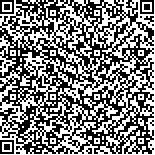|
| 引用本文: | 骆蔚健,黄妙芬,杨俊杰,王欣.油藻混合水体遥感反射比光谱分析[J].海洋科学,2021,45(10):49-60. |
| |
|
| |
|
|
| 本文已被:浏览 1292次 下载 760次 |

码上扫一扫! |
|
|
| 油藻混合水体遥感反射比光谱分析 |
|
骆蔚健1, 黄妙芬2, 杨俊杰3, 王欣2
|
|
1.广东海洋大学海洋与气象学院, 广东 湛江 524088;2.广东海洋大学数学与计算机学院, 广东 湛江 524088;3.广东海洋大学电子与信息工程学院, 广东 湛江 524088
|
|
| 摘要: |
| 辐射传输模式HydroLight是研究水体辐射传输特性的有效工具,同时也是进行石油类水体辐射传输特性的有效模型。本文基于2018年8月在辽宁大连港海域实测的石油类污染水体的表观及固有光学量数据,通过设置不同浓度的配比模拟试验,利用HydroLight对油类物质和藻类物质的单一组分和两者混合水体的遥感反射比(remote sensing reflectance,Rrs)光谱进行了模拟。模拟结果表明:(1)在仅含油类物质单一组分的水体中,Rrs随着油浓度Coil的变化分为两个特征波段:400~480 nm和480~700 nm。在400~480 nm波段范围内Rrs随Coil的增加而减小,在480~700 nm随Coil的增大而增大;(2)在仅含藻类物质的单一成分水体中,叶绿素的光谱特性需要其浓度Cchl达到一定值才能表现出来,在低Cchl时的Rrs光谱特性反映为纯水的光谱特性;(3)在油藻混合水体中,随Coil的增加会增大叶绿素的Rrs,但不会明显改变叶绿素的Rrs随波长的变化趋势,这说明油藻混合水体的光谱形状主要受叶绿素的影响,油类物质的存在只改变光谱的量值。利用HydroLight对石油类污染水体的Rrs展开研究,有助于丰富水色遥感基础研究,对完善各类水体生物光学模型研究具有重要的理论意义。 |
| 关键词: 遥感反射比 HydroLight 油类物质 叶绿素 |
| DOI:10.11759/hykx20201030002 |
| 分类号:P733.3 |
| 基金项目:国家自然科学基金项目(41771384);广东海洋大学2017年“创新强校工程”自主创新能力提升项目(GDOU2017052501);广东海洋大学科研启动经费资助项目(E16187) |
|
| Remote sensing reflectance spectral analysis of oil and algae mixed water |
|
LUO Wei-jian1, HUANG Miao-fen2, YANG Jun-jie3, WANG Xin2
|
|
1.College of Oceanography and Meteorology, Guangdong Ocean University, Zhanjiang 524088, Guangdong, China;2.Faculty of Mathematics and Computer Science, Guangdong Ocean University, Zhanjiang 524088, Guangdong, China;3.College of Electronic and Information Engineering, Guangdong Ocean University, Zhanjiang 524088, Guangdong, China
|
| Abstract: |
| The radiation transfer model HydroLight is an effective tool to study the radiation transfer characteristics of water body, and it is also an effective model to study the radiation transfer characteristics of petroleum water body. Based on the apparent and inherent optical data of oil-contaminated water bodies measured in the sea area of Dalian Port, Liaoning, in August 2018, we employ the radiation transfer model HydroLight to simulate the remote sensing reflectance (Rrs) of the single component and mixed water of oil and algae by the method of different concentrations of proportioning. The results show that:(1) In a water body containing only oil, Rrs can be divided into two characteristic bands:400-480 nm and 480-700 nm:in the range of 400-480 nm, it decreases with the increasing oil concentration Coil, while in the range of 480-700 nm, it increases; (2) In single-component water containing only algae, the spectral characteristics of chlorophyll require its concentration Cchl to reach a certain value to show up; (3) In mixed water body including oil and algae, the increase of Coil will increase Rrs of chlorophyll, but it will not alter the trend of the Rrs of chlorophyll with wavelength. This demonstrates that chlorophyll has a major influence on the spectral shape of oil algae mixed water, while the presence of oil only modifies the spectral value. The use of HydroLight in researching the Rrs of oil-contaminated water contributes to ocean color remote sensing research. It has substantial theoretical significance for improving the bio-optical model of various water bodies. |
| Key words: remote sensing reflectance HydroLight oil chlorophyll |
|
|
|
|
|
|
